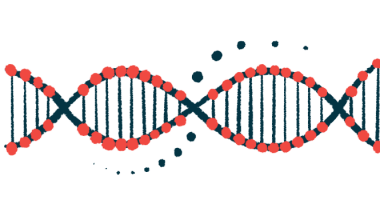7 genes identified as potential drivers of SSc: Bioinformatics study
Several medications found to have treatment potential for scleroderma

Seven genes were identified as potential drivers of systemic sclerosis (SSc) in a bioinformatics study, and may offer opportunities for use as diagnostic biomarkers or therapeutic targets.
Bioinformatics is the science of collecting and analyzing complex biological data using computers.
The study, “Hub genes, diagnostic model, and predicted drugs in systemic sclerosis by integrated bioinformatics analysis,” was published in Frontiers in Genetics.
Study compared genetic data from SSc patients vs healthy individuals
Scleroderma occurs when an overactive immune system causes scar (fibrous) tissue to build up in the skin and potentially elsewhere in the body. In systemic scleroderma, this may affect large areas of skin and organs such as the heart, lungs, and kidneys.
What exactly makes the immune system go awry is unclear. To understand what genes may be involved, a team of researchers in China used bioinformatics to compare genetic data from people with SSc versus healthy individuals who served as controls.
The researchers downloaded two datasets (GSE45485 and GSE76885) from the Gene Expression Complex public database. All people with SSc in these datasets were taking mycophenolate mofetil, an immunosuppressant used to treat scleroderma.
“Public databases combined with bioinformatics tools provide novel insights on elucidating the potential mechanisms and promising biomarkers,” the researchers wrote.
They found 86 differentially expressed genes, that is, genes that were more active (upregulated) or less active (downregulated) in people with SSc versus controls: 58 were upregulated and 28 were downregulated.
A type of analysis called Weighted Gene Co-Expression Network Analysis then helped group genes that work together and identify the hub genes within those groups. Hub genes have many interactions with other genes and play key roles in biological processes.
These hub genes were THY1, SULF1, PRSS23, COL5A2, NNMT, SLCO2B1, and TIMP1, and they have known roles in autoimmune disease and the immune response, infection and inflammation, and the formation of scar tissue (fibrosis).
To identify the most important genes involved in SSc, the researchers used a statistical method called Least Absolute Shrinkage and Selection Operator regression. THY1 and SULF1 were identified as potential diagnostic biomarkers.
To validate their findings, the researchers drew on four other datasets (GSE32413, GSE95065, GSE58095, and GSE125362). They found that both THY1 and SULF1 were indeed more active in samples of skin from people with SSc than from controls.
These findings suggest that these two genes “may be useful to guide the diagnosis of SSc in clinical applications,” the researchers wrote.
Researchers identify medications with potential to treat SSc
To identify potential medications for SSc, the researchers entered 30 of the differentially expressed genes into the Connectivity Map, a database of small molecules and how they affect genes.
The top 10 small molecules with potential to treat SSc were: desoxypeganine, clofazimine, BRL-50481, GW-311616, methyllycaconitine, acetyl-geranyl-cysteine, SB-525334, dipyridamole, tomelukast, and warfarin.
Using molecular docking, which is a computer tool to predict how small molecules interact with their targets, the researchers found that BRL-50481 and dipyridamole block a type of enzyme called phosphodiesterase, which is involved in multiple functions in cells. Phosphodiesterase inhibitors work as blood vessel wideners and ease blood vessel disease, a disease that’s key in the development of SSc.
Another small molecule, SB-525334, blocks transforming growth factor beta receptor 1, a protein that can activate molecular signals involved in fibrosis. Earlier work in animal models has suggested that this small molecule may ease fibrosis.
While these findings “await further experimental validation,” they may “shed new lights into the development of SSc and may provide therapeutic basis for clinical applications in the prevention of SSc,” the researchers concluded.








